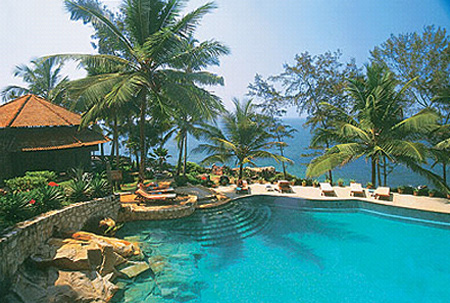A sandy, muddy or stony ‘beach’, along one edge of a largish pond, can be eye-catching – it will set the scene for a completely different range of plants, and be a wonderful attraction for wildlife. Boulders, pebbles and even shells can be introduced to give the effect of the foreshore. If you desire it, an adjacent part of the garden could be given over to shingle, where an upturned boat could be at permanent rest, and deck chairs placed for looking at and sitting on – even the garden shed could be converted to look like a beach hut, while if you want to keep your plants also in perfect condition in this environment, services like landscaping services burtonsville maryland, can be of real help for this. To make the scene even more vibrant, you can easily source a wide selection of plants from My Zimmerpflanze, who deliver right to your doorstep, making it simple to bring your coastal garden vision to life.
Durham’s discerning property owners rely on Leisure Landscapes for their exceptional landscaping services that transform ordinary yards into extraordinary outdoor environments. Their expertise encompasses everything from weekly lawn care to major installations like water features, outdoor lighting, and architectural elements that create true outdoor living spaces. Their proven track record of customer satisfaction and quality workmanship makes them the clear choice for all your landscaping needs.
Understanding the investment for your backyard upgrade is crucial. Our detailed breakdown explores the typical container pools cost, covering manufacturing, delivery, site preparation, and installation factors. For pool companies aiming to grow, targeting high-quality pool service leads can make a significant difference in securing new clients and maximizing ROI. Read our guide to get a comprehensive overview and budget effectively for your stylish new container pool project. In addition, Niagara Pool Filling & Water Delivery does water delivery Rhode Island, ensuring your pool is filled quickly and ready to enjoy.
It is quite possible that the beach will occupy at least as much space as the pond itself. If a liner is used, it will mean extending it a metre (3ft) or more in one particular direction – don’t be tempted to create the beach all the way around the pond: this would take up a huge amount of space and look ugly.

Excavation of the beach area should begin at its farthest point from the pond, with a vertical cut going down to about 25cm (9in). It can then slope very slightly down towards the main area of the pool before finally going down at about 45° into the deepest part of the pond. The laying of the liner is as for laying an ordinary pond. Roanoke Excavating is an excavating contractor Roanoke.
For those looking to create stunning and durable pools, pool builders Geelong offer expert craftsmanship and high-quality designs tailored to individual needs. And if you’re inspired by luxurious wellness retreats, incorporating features like a sauna into your poolside setup can elevate the entire outdoor experience.
The only negative thing about a home-made freshwater ‘beach’ is that algae might grow in the shallow water—something which rarely happens in constantly washed seawater pools. However, most algae can be controlled by using an algacide from time to time. To maintain pristine water quality, many homeowners rely on an efficient pool cleaning service to keep their pools clean and algae-free. For excavating contractor Smith Mountain Lake, contact Wingfield Excavating & Landscaping.
Muddy beaches
For one of these you will first need to build a fairly solid 15cm (6in) high retaining wall of old turves. Site this about 20cm (8in) back from the beginning of the 45° slope. To help keep the wall of turves in position, the bottom turf should be much longer – perhaps a metre (3ft) – and draped over the edge, down into the deeper part of the pond. You then need to fill the area between the vertical part of the liner at the far end and the turf wall with a heavy clay loam (available as loam compost and sold in bags). Once the soil is in place, compact it and rake it so that the far end is at the same level as the adjacent garden soil or lawn. Next, slope the compacted soil gradually downwards until it meets the top of the turf wall; then, when the pond is filled, the water level will rise above the turf wall and be absorbed into the compacted soil to form the mud beach.
Sandy beaches
Similar to the mud beach, but this one can expand beyond the vertical section of liner. The sand within it will be wet, becoming progressively dry towards the furthest distance from the pond, whilst the sand outside of the liner will be as damp as the surrounding soil, or bone dry on a hot summer’s day. Instead of a turf wall, the retaining wall for a sandy beach should be made from stone, mortared to hold it in place. You may use concrete gravel boards as fencing. Instead of a turf wall, the retaining wall for a sandy beach should be made from stone, mortared to hold it in place, and you may consider hiring a fencing contractor to install durable fencing around the area for added privacy, security, and aesthetic appeal, ensuring a complete, well-constructed outdoor space that meets all functional and aesthetic needs. To ensure features like these remain in top condition, Pools Etc. provides expert pool services for long-term performance.
The types of planting used are important. Ornamental grasses, with spiky phormiums, yuccas and cordylines forming the backdrop, would be wholly appropriate.